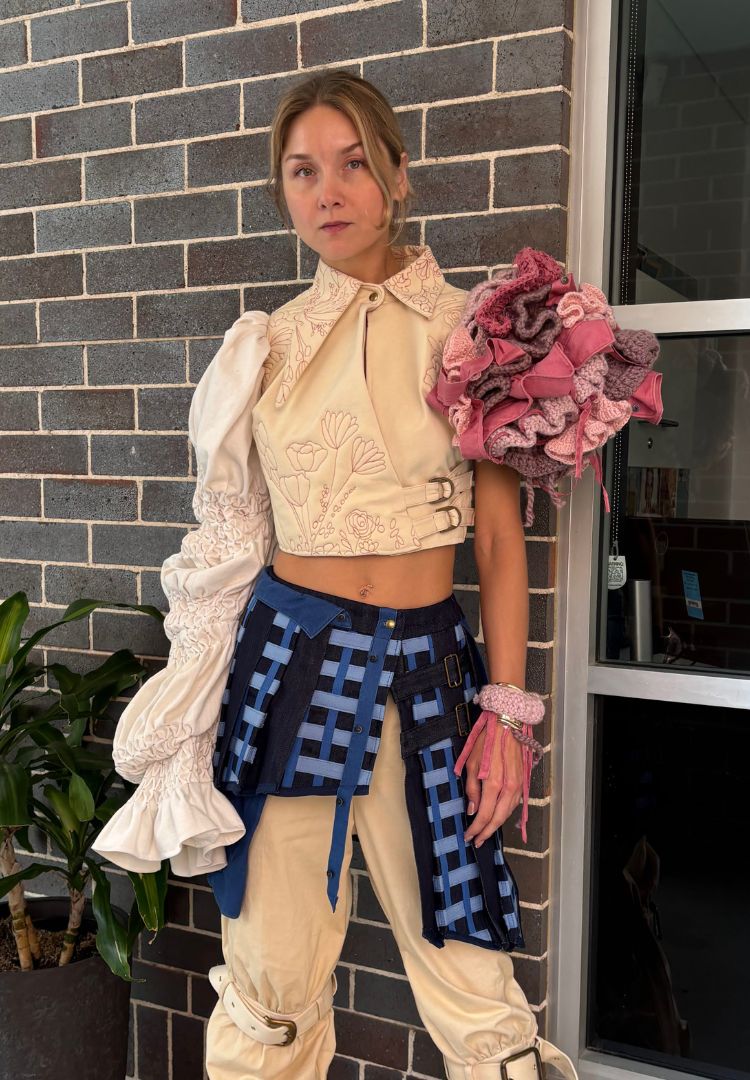Goodbyes founder Monique Thomas’ guide to finding quality pre-loved clothing
PHOTOGRAPHY BY OLIVIA REPACI
WORDS BY MARYEL SOUSA
“This focus on craftsmanship is why so many vintage pieces are still circulating through our stores today.”
Creating a sustainable wardrobe is about more than just cutting out fast fashion and shopping secondhand. Even pre-loved clothing can end up in the bin when zippers stick, pockets rip and fabric pills. If you want to reduce your environmental impact, your pre-loved purchases need a much longer lifespan.
As a seasoned op shopper, I’ve developed a sixth sense for finding gems in any secondhand store. But when my partner asked me why I’d suggested he leave a pair of jeans on the rack during a recent thrifting spree, I realised I couldn’t properly articulate what defines quality secondhand fashion.
Curious to learn more about what separates a well-made vintage dress from the kind born from microtrends, I spoke to Monique Thomas, director and co-founder of Goodbyes, about what she looks for in pre-loved pieces to know they’ll last for years to come.
What are high-quality fabrics to look out for when shopping pre-loved fashion?
I often rely on touch to guide me. Feeling for dense weaves, durable materials and interesting textures. I know it might sound a bit ominous to say “touch everything,” but if you have pieces in your wardrobe that you’ve loved and enjoyed for years, they can serve as a great reference point. Use them as a guide for what to look for when you’re feeling your way through the racks. It’s about recognising those familiar qualities that have stood the test of time.
Which textile blends are more likely to hold up over time?
As I mentioned, I usually rely on touch when sifting through the racks. However, if you’re checking care labels, look for blends with a higher percentage of natural fabrics and fibres like cotton, wool and silk. These materials tend to have greater longevity and can withstand the test of time.
How can we identify good stitching on a well-constructed piece?
Look for overlocking and neat, tidy details. Pay attention to any loose threads or areas where the fabric might be pulling apart around the stitching, creating small holes – these can be signs of poor construction.
In contrast, well-constructed pieces tend to have clean, tight stitching without gaps or fraying. A gentle stress test can also be helpful – by pulling the fabric tight at the seam and holding it up to the light, you can check for any holes or signs of wear.
When we think about durability, is all hardware created equal?
Not at all. Just like with clothing, the best way to gauge durability and craftsmanship is by touch and use. Do the zippers glide smoothly? Does the clasp or buckle have that satisfying click? Is there any noticeable wear, catching, or scratching?
A weekend excursion to the designer stores on Collins Street can be a good way to get to know the hardware, especially if you’re eyeing a secondhand designer investment piece. I believe authentication is incredibly important and terribly difficult for anyone other than the brands themselves to do 100 per cent accurately. So it can be helpful to get to know the brand texturally through their current collections before investing.
Are certain periods of vintage fashion of higher quality than others?
Historically, the fashion cycle moved at a slower pace, with smaller production volumes and a greater emphasis on quality. Clothing was designed to stand the test of time and this focus on craftsmanship is why so many vintage pieces are still circulating through our stores today.
In contrast, much of today’s fashion is driven by increasingly fast cycles and mass production, prioritising the demand for fleeting trends over durability.
Does altering a pre-loved item impact its longevity?
It depends entirely on how it’s altered. As someone who doesn’t really know how to sew beyond the basics, I’ve learned that I’m not the best person for the job. But if you can find an alterations business that can honour the original craftsmanship, there’s no reason why alterations should affect a garment’s longevity. You’re going to get more use out of it if it fits well!
This story was originally published on August 28, 2024.
To learn more about high-quality clothing, head here.













